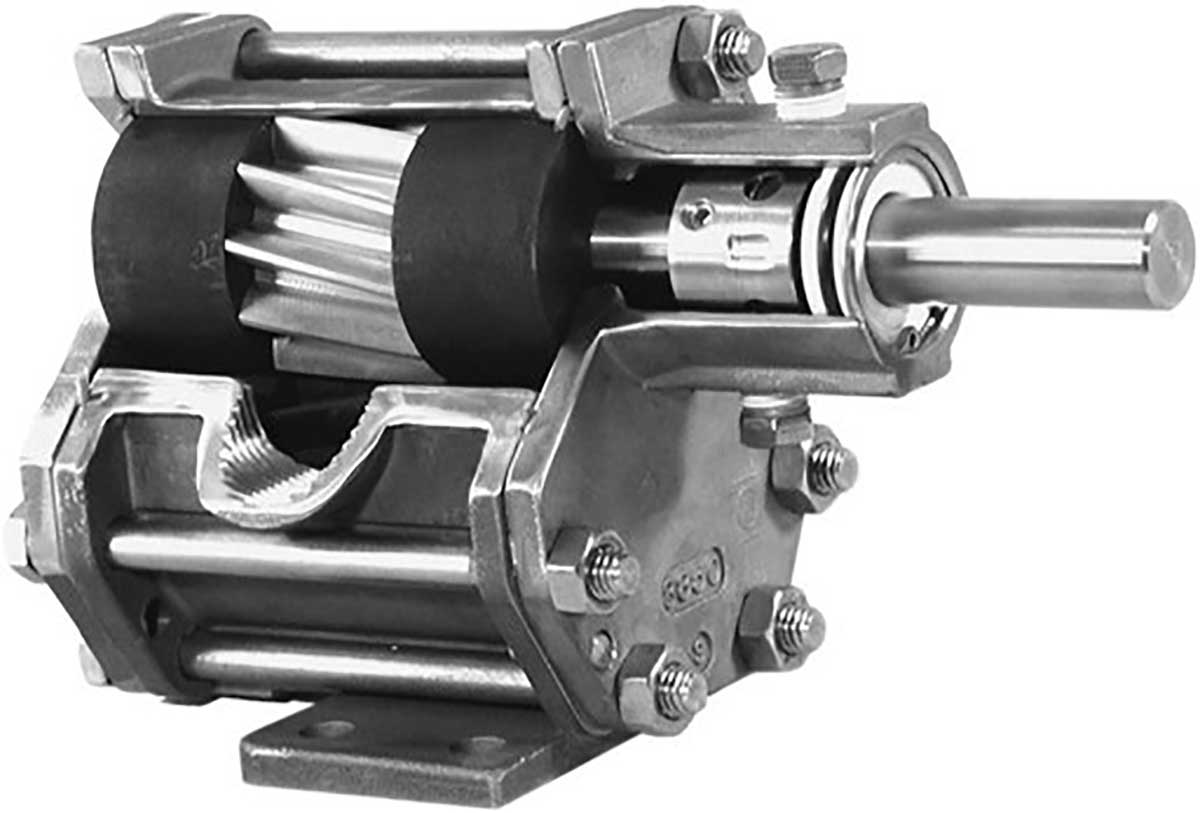Rotary Gear Pumps vs. Other Pump Types: Which is Best for Your Application?

When it comes to industrial pumping solutions, choosing the right pump for your specific application can make all the difference in terms of efficiency, reliability, and cost-effectiveness. Among the various pump technologies available, rotary gear pumps stand out as a versatile and efficient option for handling a wide range of fluids. But how do they compare to other pump types, and is a rotary gear pump the best choice for your needs?
This blog will provide an in-depth comparison of rotary gear pumps and other popular pump types, exploring their unique features, uses, advantages, and limitations. By the end, you’ll have a clearer understanding of whether a rotary gear pump is the right fit for your application.
What Are Rotary Gear Pumps?
Before comparing pump types, it’s important to understand what rotary gear pumps are and how they function. Rotary gear pumps are a type of positive displacement pump, known for their ability to move fluids precisely and consistently. They use interlocking gears to create a sealed chamber, transferring fluid through the pump in a controlled, steady flow.
Key Features of Rotary Gear Pumps:
- Precision and Consistency: Provide constant and smooth fluid flow regardless of viscosity.
- Compact Design: Ideal for smaller systems or applications where space is limited.
- Versatility: Handle a wide range of liquids, including oils, chemicals, and viscous fluids.
- Self-Priming: Capable of removing air from the inlet line, simplifying start-up.
Rotary gear pumps are widely used in industries including chemical processing, food and beverage, pharmaceuticals, and marine applications.
Rotary Gear Pumps vs. Centrifugal Pumps
One of the most common comparisons is between rotary gear pumps and centrifugal pumps. Both have distinct operational principles and serve different needs.
Centrifugal Pumps Overview:
Centrifugal pumps are dynamic pumps that use a spinning impeller to create velocity, converting kinetic energy into fluid flow. They are ideal for moving large volumes of low-viscosity liquids at high speeds.
Key Differences:
- Flow Rate vs. Precision:
Rotary gear pumps excel in applications that require precise flow control, especially for high-viscosity fluids, whereas centrifugal pumps are better suited for high-flow applications like water distribution.
- Operating Conditions:
Centrifugal pumps perform best with low-viscosity fluids and in applications with high-speed requirements. However, they struggle with highly viscous liquids, which is where rotary gear pumps shine.
- Priming Ability:
Rotary gear pumps are self-priming, making them easy to start without external assistance. Centrifugal pumps, on the other hand, require priming chambers or external priming equipment.
Application Examples:
Use a rotary gear pump when transferring viscous oils, molasses, or paints. Opt for a centrifugal pump in water supply systems or cooling systems.
Rotary Gear Pumps vs. Diaphragm Pumps
Another key comparison is between rotary gear pumps and diaphragm pumps. Both cater to niche applications but have unique strengths.
Diaphragm Pumps Overview:
Diaphragm pumps are positive displacement pumps that use a flexible diaphragm to move fluids. They are highly resistant to corrosion, making them suitable for aggressive chemicals and abrasive slurries.
Key Differences:
- Fluid Handling:
Rotary gear pumps provide steady and consistent flow, which is critical in applications requiring precise metering, while diaphragm pumps excel at handling slurries, solids, and corrosive materials.
- Maintenance:
Diaphragm pumps have fewer moving parts exposed to wear, making them low-maintenance. Rotary gear pumps, though durable, require periodic gear inspection and maintenance.
- Pressure Capabilities:
Gear pumps can handle higher pressure applications compared to diaphragm pumps, which are limited in terms of pressure output.
Application Examples:
Choose a rotary gear pump for industrial lubrication, chemical dosing, or fuel transfer. Use a diaphragm pump for abrasive slurries, wastewater treatment, or chemical transfer in harsh environments.
Rotary Gear Pumps vs. Peristaltic Pumps
Peristaltic pumps, another type of positive displacement pump, are often compared to rotary gear pumps in specific applications.
Peristaltic Pumps Overview:
Peristaltic pumps use a rotating roller mechanism to compress a flexible tube, creating a vacuum to draw and move fluid. They are ideal for pumping fluids in sterile or contamination-sensitive environments.
Key Differences:
- Contamination Control:
Peristaltic pumps are unmatched in sterile applications since the fluid only contacts the tubing, making them ideal for food, pharmaceuticals, and medical use. Rotary gear pumps, in contrast, require precise cleaning to maintain hygiene standards.
- Fluid Viscosity:
While both pump types can handle viscous fluids, rotary gear pumps excel with extremely thick liquids, such as heavy oils.
- Durability:
Gear pumps are more durable over time since the tubing in peristaltic pumps is subject to wear and frequent replacement.
Application Examples:
Opt for a rotary gear pump in industrial lubrication systems or heavy oil processing. A peristaltic pump is used to transfer sterile solutions in the medical or food industry.
Advantages and Disadvantages of Rotary Gear Pumps
Advantages:
- Precision: Highly accurate flow control makes them ideal for dosing and metering.
- Versatility: Suitable for a wide variety of liquid types, including viscous and corrosive fluids.
- Compact Design: Space-saving and easy to install in smaller systems.
- Self-Priming: Simplifies operation and reduces the need for additional equipment.
Disadvantages:
- Maintenance: Requires routine inspection of gears to ensure optimal performance.
- Not Ideal for Solids: Can experience wear or damage if solid particles are present in the fluid.
- Initial Cost: Higher upfront cost compared to simpler pump types like centrifugal pumps.
How to Choose the Right Pump for Your Application
Determining the best pump for your application requires evaluating several factors:
- Fluid Type:
Consider viscosity, corrosiveness, and whether the fluid contains solids.
- Project Requirements:
Do you need a pump for high flow rates or precise metering?
- Operating Conditions:
Assess the temperature, pressure, and environment of your system.
- Maintenance Preferences:
How much downtime and upkeep can your operation accommodate?
While rotary gear pumps offer versatility and precision, the specific requirements of your application will ultimately determine the right choice.
Is a Rotary Gear Pump Right for You?
Rotary gear pumps are a powerful solution for applications requiring accuracy, efficiency, and durability. Whether you’re in chemical processing, industrial lubrication, or food production, a rotary gear pump can meet your needs with unmatched precision.




